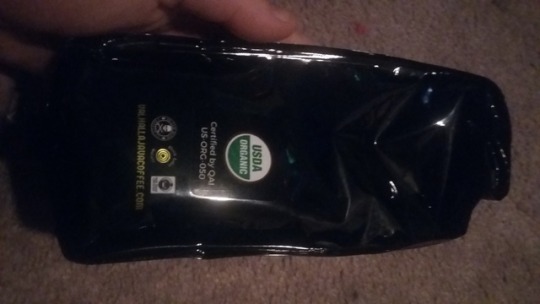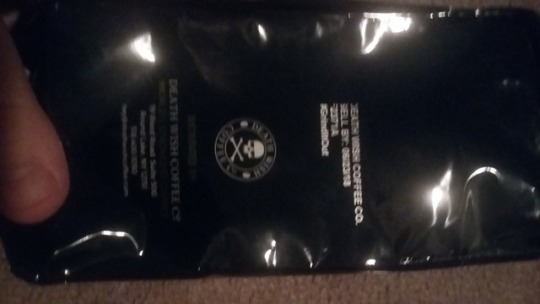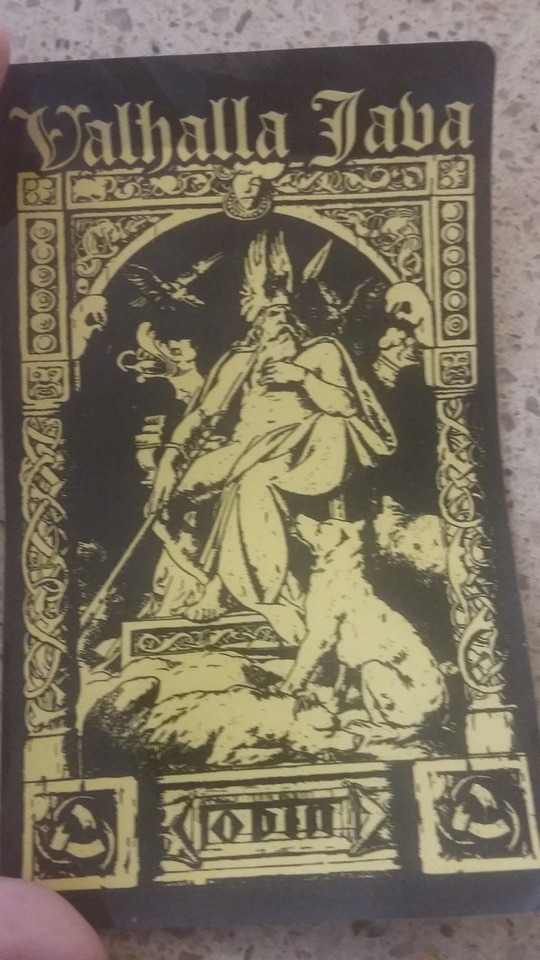#Valhalla java
Explore tagged Tumblr posts
Note
I've always been aggravated by the way Odin looks to so many people because of Marvel. (I've only seen any of the movies because I have a crush on Tom Huddleston) Why can't I find any articles or videos about how Marvel made Odin look bad?! I have worked with him before, and I've become very passionate about this.
Having a crush on Tom Hiddleston is completely understandable. I went to London (I live in San Francisco - a not-inexpensive 11 hour plane flight) to see him in "Betrayal". I get it. And he is even more charming and handsome in person . . . .
Oh, right, where was I? Right. Odin. Deity images. This got rather more expansive than I first thought, so I've added a cut to spare everyone's scrolling hand.
There likely are articles from people who are similarly displeased with Anthony Hopkins personifying the Allfather. I'm not sure how one would search for those; the search terms could vary wildly. My guess would be to find a Marvel forum thread from around the time the first "Thor" movie came out—there would probably have been intense debates between people who think he should have looked like a medieval woodcut, and people who think he needed more gold in his costume. Or find a thread on a Norse/heathen forum around the same time—you can probably find endless lamentations of the images of each of the characters in the film. (Thinking of someone who stated that Renee Russo couldn't play Frigga because she was "too pretty". Really glad that was an overheard comment, and not a discussion I was personally involved in.)
When an image comes from popular culture and the item (movie, book, etc.) is widely embraced, that image embeds in individual and collective consciousness. People who've never seen the movies will pick up on that image and perpetuate them. I understand it's aggravating when that's not how you see the being.
While you can't change the pervasiveness of the MCU image, you can channel your passion into creating and sharing an image that seems right to you. It may or may not achieve the same critical mass in the collective consciousness, but you have put forth your vision.
Not everyone is going to share the same perspective—that's why we have so many different representations of the same being, whether human, divine, or other.
For example, this is the image on my Odin altar. It's actually a sticker from Death Wish Coffee Company, which sent the sticker with my first order of Valhalla Java:

It's a classic drawing of Odin. I left the "Odinforce Blend" words on it, because even though they refer to the coffee, it makes me think about what blending Odin's energies with other energies might produce. Other people might be offended that I'm using a coffee company sticker on my altar, but it works for me, and it's my altar, so it doesn't have to work for anyone else.
Work with the images that work for you. Try to let go of your aggravation, and let everyone else work with the images that work for them. If someone imagines Odin as Anthony Hopkins in a gold brocade robe, or in shiny armor astride a CGI Sleipnir, that's their choice. They may change their mind when they see a different image, and perhaps that image will come from you!
6 notes
·
View notes
Text
Death Wish Coffee Valhalla Java Dark Roast Ground Coffee, 12 Oz, Bold & Intense Blend of Arabica Robusta Beans, USDA Organic
USDA Certified Organic Coffee Beans Is Discontinued By Manufacturer : No Product Dimensions : 3.5 x 3 x 6.5 inches; 12.8 ounces UPC : 885333654485 885397136903 Manufacturer : Death Wish Coffee Co. ASIN : B00FL6PCF6 Units : 12 Ounce DAY STARTER GROUND COFFEE: Start your day with our dark roast coffee ground, featuring a robust and intense flavor. Ideal for those mornings…
0 notes
Text
Lịch sử của Java - Ngôn ngữ lập trình Java
Java là một trong những ngôn ngữ lập trình phổ biến nhất trên thế giới, được sử dụng rộng rãi trong phát triển ứng dụng web, di động, doanh nghiệp và nhiều lĩnh vực khác. Với lịch sử phát triển hơn ba thập kỷ, Java đã trở thành một công cụ mạnh mẽ, linh hoạt và đáng tin cậy. Trong bài viết này, chúng ta sẽ khám phá hành trình phát triển của Java, từ nguồn gốc đến vai trò quan trọng của nó trong ngành công nghệ ngày nay.
1. Nguồn gốc của Java
Vào đầu những năm 1990, Java được phát triển bởi một nhóm kỹ sư tại Sun Microsystems, dẫn đầu bởi James Gosling. Dự án bắt đầu với tên mã "Green Project" vào năm 1991, nhằm tạo ra một ngôn ngữ lập trình có thể chạy trên nhiều thiết b��� khác nhau, từ máy tính đến các thiết bị gia dụng. Ban đầu, ngôn ngữ này được gọi là Oak (cây sồi), lấy cảm hứng từ một cái cây gần văn phòng của Gosling. Tuy nhiên, do vấn đề bản quyền, cái tên Java – lấy cảm hứng từ một loại cà phê nổi tiếng – đã được chọn vào năm 1995.
Mục tiêu chính của Java là tạo ra một ngôn ngữ lập trình độc lập với nền tảng, hoạt động theo nguyên tắc "viết một lần, chạy mọi nơi" (Write Once, Run Anywhere - WORA). Điều này được thực hiện thông qua Java Virtual Machine (JVM), một môi trường ảo cho phép mã Java chạy trên bất kỳ thiết bị nào có cài đặt JVM, bất kể hệ điều hành.

Nguồn gốc của Java
2. Các mốc phát triển quan trọng của Java
2.1. Ra mắt chính thức (1995)
Vào tháng 5 năm 1995, Sun Microsystems chính thức phát hành Java 1.0, đánh dấu sự ra đời của một ngôn ngữ lập trình mang tính cách mạng. Phiên bản này cung cấp các tính năng cơ bản như tính hướng đối tượng, bảo mật và khả năng chạy trên nhiều nền tảng. Java nhanh chóng thu hút sự chú ý nhờ khả năng phát triển applet – các ứng dụng nhỏ chạy trong trình duyệt web.
2.2. Java 2 và sự bùng nổ (1998)
Phiên bản Java 2 (J2SE 1.2) ra mắt vào năm 1998, mang đến nhiều cải tiến quan trọng như thư viện giao diện người dùng Swing, Java Naming and Directory Interface (JNDI) và cải thiện hiệu suất của JVM. Đây là thời điểm Java trở thành lựa chọn hàng đầu cho các ứng dụng doanh nghiệp và phát triển web.
2.3. Sự mở rộng với Java EE và Java ME
Cùng với sự phát triển của Java, Sun Microsystems đã giới thiệu Java Platform, Enterprise Edition (Java EE) dành cho các ứng dụng doanh nghiệp quy mô lớn và Java Platform, Micro Edition (Java ME) cho các thiết bị di động và nhúng. Những nền tảng này đã mở rộng phạm vi ứng dụng của Java, từ điện thoại di động đến các hệ thống quản lý phức tạp.
2.4. Oracle tiếp quản và các phiên bản hiện đại
Năm 2010, Oracle mua lại Sun Microsystems, đánh dấu một giai đoạn mới trong lịch sử Java. Oracle tiếp tục phát triển Java với các phiên bản như Java 8 (2014), giới thiệu các tính năng quan trọng như Lambda Expressions và Stream API, giúp lập trình viên viết mã hiệu quả hơn. Java 11 (2018) và Java 17 (2021) là các phiên bản Long-Term Support (LTS), được sử dụng rộng rãi trong các dự án dài hạn.

3. Tại sao Java vẫn phổ biến?
Sau hơn 30 năm, Java vẫn duy trì vị thế là một trong những ngôn ngữ lập trình hàng đầu. Dưới đây là những lý do chính:
Tính độc lập nền tảng: Nhờ JVM, mã Java có thể chạy trên bất kỳ thiết bị nào mà không cần chỉnh sửa.
Cộng đồng lớn: Java có một cộng đồng lập trình viên khổng lồ, với hàng triệu tài liệu, thư viện và công cụ hỗ trợ.
Ứng dụng đa dạng: Java được sử dụng trong phát triển ứng dụng Android, hệ thống ngân hàng, thương mại điện tử, và cả trí tuệ nhân tạo.
Bảo mật cao: Java được thiết kế với các tính năng bảo mật mạnh mẽ, phù hợp cho các ứng dụng yêu cầu độ an toàn cao.

Tại sao Java vẫn phổ biến?
4. Java trong tương lai
Trong bối cảnh công nghệ phát triển nhanh chóng, Java vẫn đang được cải tiến để đáp ứng các xu hướng mới như điện toán đám mây, trí tuệ nhân tạo và dữ liệu lớn. Các dự án như Project Loom (cải thiện xử lý đồng thời) và Project Valhalla (tối ưu hóa hiệu suất) hứa hẹn sẽ đưa Java tiến xa hơn. Oracle và cộng đồng mã nguồn mở tiếp tục đảm bảo rằng Java không chỉ là một ngôn ngữ lập trình của quá khứ mà còn là công cụ của tương lai.

Java trong tương lai
Kết luận
Java không chỉ là một ngôn ngữ lập trình mà còn là một biểu tượng của sự đổi mới trong ngành công nghệ. Từ những ngày đầu với tên gọi Oak đến vị thế dẫn đầu hiện nay, Java đã chứng minh được sức mạnh và tính linh hoạt của mình. Với sự hỗ trợ của cộng đồng và các cải tiến liên tục, Java sẽ tiếp tục đóng vai trò quan trọng trong tương lai công nghệ.
Hãy bắt đầu khám phá Java ngay hôm nay để tận dụng tiềm năng của ngôn ngữ lập trình này!

Java hiện đại trên nền công nghệ số
📚 Lịch sử của Java – Hành trình từ “Oak” đến ngôn ngữ lập trình mạnh mẽ toàn cầu! Khám phá nguồn gốc, sự phát triển và vì sao Java vẫn giữ vững vị trí top đầu trong thế giới lập trình.
🔍 Tìm hiểu ngay tại: Java Highlight
#LichSuCuaJava#JavaHighlight#LapTrinhJava#LichSuLapTrinh#NgonNguLapTrinh#JavaProgramming#JavaDeveloper#JavaHistory#CodingVietnam#DevHocCode#JavaTimeline
0 notes
Text

Java’s role in high-performance computing (HPC)
Java’s role in High-Performance Computing (HPC) has evolved significantly over the years. While traditionally, languages like C, C++, and Fortran dominated the HPC landscape due to their low-level control over memory and performance, Java has made inroads into this field thanks to various optimizations and frameworks.
Advantages of Java in HPC
Platform Independence — The Java Virtual Machine (JVM) allows Java applications to run on multiple architectures without modification.
Automatic Memory Management — Java’s garbage collection (GC) simplifies memory management, reducing the risk of memory leaks common in manually managed languages.
Multi-threading & Parallelism — Java provides built-in support for multithreading, making it easier to develop parallel applications.
JIT Compilation & Performance Optimizations — Just-In-Time (JIT) compilation helps Java achieve performance close to natively compiled languages.
Big Data & Distributed Computing — Java powers popular big data frameworks like Apache Hadoop, Apache Spark, and Flink, which are widely used for distributed HPC tasks.
Challenges of Java in HPC
Garbage Collection Overhead — While automatic memory management is beneficial, GC pauses can introduce latency, making real-time processing challenging.
Lower Native Performance — Even with JIT optimization, Java is generally slower than C or Fortran in numerical and memory-intensive computations.
Lack of Low-Level Control — Java abstracts many hardware-level operations, which can be a disadvantage in fine-tuned HPC applications.
Use Cases of Java in HPC
Big Data Processing — Apache Hadoop and Apache Spark, both written in Java/Scala, enable large-scale data processing.
Financial Computing — Many trading platforms use Java for risk analysis, Monte Carlo simulations, and algorithmic trading.
Bioinformatics — Java-based tools like Apache Mahout and��BioJava support genomic and protein structure analysis.
Cloud-Based HPC — Java is widely used in cloud computing frameworks that provide scalable, distributed computing resources.
Java-Based HPC Frameworks & Libraries
Parallel Java (PJ2) — A library designed for parallel computing applications.
Java Grande Forum — A research initiative aimed at improving Java’s suitability for scientific computing.
MPJ Express — A Java implementation of Message Passing Interface (MPI) for distributed computing.
Future of Java in HPC
With ongoing developments like Project Panama (improving native interoperability), Project Valhalla (introducing value types for better memory efficiency), and optimized Garbage Collectors (ZGC, Shenandoah), Java is becoming a more viable option for high-performance computing tasks.
1 note
·
View note
Text
Software Developer 4
for both new features as well as ongoing maintenance. Job Description: Software engineer, Core Libraries Team. We are in the… the latest Java features from projects Amber, Loom, Panama, & Valhalla. We are looking for a software engineer… Apply Now
0 notes
Text


idk if I've posted the shrimps new tank yet, they've been thriving in the 5gal!! i definitely need to get an algae scrubber, but for now the babies can enjoy salad every day! pipe bomb is still kicking, so I can't get any algae eating snails yet, but once he enters Valhalla, I'll get a couple mystery snails I think. I put some fossils in the tank for decor, and whatever water plants came with the few amanos I got from Craigslist have been going crazy lol. my java moss is thriving as well. basically everything is wonderful and I love my shrimp!! 🦐🦐🦐
1 note
·
View note
Text
The future of Java
Title: The Future of Java: Evolution in a Changing Technological Landscape
Java, the stalwart of the programming world, has been a cornerstone of software development for over two decades. From its inception in the mid-90s to its current widespread use across industries, Java has consistently adapted to meet the demands of modern computing. As we look ahead, the future of Java appears both promising and evolving, shaped by technological trends and community-driven innovations.
Adaptation to Modern Trends
Java's resilience lies in its ability to adapt to emerging technological trends. As cloud computing continues to dominate the IT landscape, Java remains a preferred choice due to its platform independence and robustness. The introduction of features like Project Loom for lightweight concurrency and Project Panama for improved native integration showcases Java's commitment to staying relevant in a cloud-native world.
Enhanced Performance and Efficiency
With advancements in hardware capabilities and the rise of multi-core processors, Java has focused on enhancing performance and efficiency. Projects such as Valhalla aim to improve Java's memory efficiency and support for value types, while GraalVM offers enhanced performance through just-in-time compilation and polyglot capabilities, allowing Java applications to run faster and more efficiently across different platforms.
Support for Modern Development Practices
Java's future also embraces modern development practices such as microservices architecture and containerization. Frameworks like Spring Boot have simplified the development of microservices in Java, while tools like Docker and Kubernetes provide robust solutions for deploying and managing Java applications at scale. The Java ecosystem continues to expand with frameworks and libraries that cater to diverse development needs, fostering innovation and productivity.
Community-Driven Innovation
At the heart of Java's evolution is its vibrant community. The Java Community Process (JCP) ensures that Java evolves through consensus and collaboration, with contributions from developers, organizations, and academia worldwide. Open-source projects like Jakarta EE (formerly Java EE) and Quarkus exemplify community-driven efforts to modernize Java for enterprise applications, emphasizing agility, scalability, and cloud readiness.
Cross-Platform Compatibility
Java's "write once, run anywhere" mantra remains relevant in an increasingly fragmented technological landscape. The Java Virtual Machine (JVM) continues to provide a stable and consistent runtime environment for Java applications, supporting diverse platforms from mobile devices to servers. Java's compatibility across different operating systems and devices ensures its longevity as a versatile programming language for a wide range of use cases.
Conclusion
In conclusion, the future of Java is shaped by its ability to embrace change while preserving its core strengths. As technology evolves, Java evolves with it, offering enhanced performance, scalability, and developer productivity. From cloud-native solutions to modern development practices, Java continues to empower developers to build robust, scalable applications across various platforms. With a strong community and ongoing innovation, Java remains a cornerstone of the software development landscape, poised to thrive in the years to come.
Whether you're a seasoned Java developer or exploring the language for the first time, the future promises exciting opportunities and advancements in Java programming. As we navigate the ever-changing technological landscape, Java stands as a testament to adaptability, innovation, and enduring relevance in the world of software development.
1 note
·
View note
Text
Death Wish - Valhalla Blend
*noms brownies in silence*
*nods about tonight*

Due to a rabid bout of insomnia, the Halloween special for @the-andromeda-effect is now DONE. I'll be working on Jasper and Eva (OC of @evita-shelby ) because Jasper WILL NOT SHUT UP...and I do not have the patience to deal with him today. *laughs*
12 notes
·
View notes
Photo

8 notes
·
View notes
Photo

My sleepy Shank sona
2K notes
·
View notes
Text
@seidrmadr - We have both classic Death Wish and Valhalla Java Odinforce blend at the office. (I also use the VJO to make offerings to Odin, because of course; the Death Wish is for Loki.) We used to make it quarter-strength or half-strength for visitors, because we try to be considerate. A visitor some years ago was excited to try it full strength. She emailed me at 2:00 AM the next day, saying that she had never before heard in color or seen sound waves as people spoke, and she hadn’t fallen asleep yet. The coffees are, indeed, all that in terms of caffeine.
We now have Birds & Beans Coffee regular caffeine level coffee for visitors to avoid this problem. Organic farms, bird and bee friendly, shade grown, and 5% of their revenues go to conservation groups.
There are two other companies (that I know of) making super-caffeinated coffee. Know your limits, as these are not good choices for people with health issues which are not compatible with caffeine. I have not tried either of the other two brands.
Death Wish has 708 mg caffeine per 12 ounce cup (59 mg/ounce).
Biohazard has 928 mg caffeine per 12 ounce cup (77 mg/ounce). Black Insomnia has 1,105 mg caffeine per 12 ounce cup (92 mg/ounce).
There’s also Black Blood of the Earth coffee concentrate, made with various coffees. They offer a version made with Death Wish called Blood of the Harpy. Their products seem expensive, but when you calculate out how many cups of coffee you can get from one bottle, it’s not ridiculous.
At one point, my business partner was adding shots of BBotE to his double-strength Death Wish coffee. Highly effective, but not recommended for anyone with high blood pressure or heart issues.
man is the like.. extra caffeine in like. death wish coffee or similar brands worth it? im drinking Many Cups a day and im trying to cut back so would that help? it is very expensive but.. perhaps?
2 notes
·
View notes
Photo

Lookie what came today!!!
6 notes
·
View notes
Photo







We got coffee! Deathwish came out with their Valhalla java. And we are currently trying 'odinforce'. I can't wait for more coffees to come out in this line. The coffee is brewing right now ill update you guys after I drink it.
#odinforce coffee#Valhalla java#deathwish coffee#death wish coffee#witch#Norse pagan#Odin#coffee#lol I'm gonna die
4 notes
·
View notes
Text
So they want me going up a grade of sock pressure, switching to decaf, and reeeeaaaally forcing the fluids. The cardiologist was at least kind enough to write me a “yeah, we want this poor sod on about 64oz of fluid a day in perpetuity, so there may be a lot more peeing” note for my supervisors.
#dysautonomia problems#i’m gonna miss valhalla java :(#whole bean decaf’s a lot harder to find#granted current science casts doubt on the idea that the dosage of caffeine present in a regular coffee drinker’s morning cup o’ joe would#cause you to lose fluids in excess of what you consume#so -shrugs-
2 notes
·
View notes
Photo

It's good
2 notes
·
View notes
Text
I bought my dad some Deathwish coffee for his birthday and we've got that shit ground up and ready for tomorrow I can't wait to get jacked on expensive joe
#steph derps#i didnt know what else to get him#and this stuff is supposed to be good#so why not!#it was also a 2 pack with Valhalla Java which im excited to try next
2 notes
·
View notes